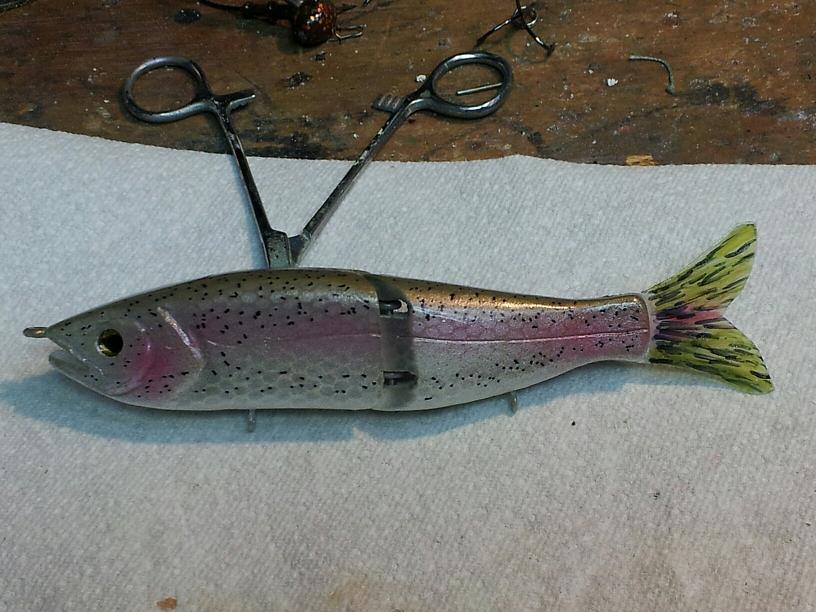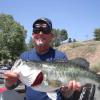7" S Waver copy glide bait
This is my copy, in PVC trimboard, of the S Waver glide bait.
It is 7" long, weighs 50.5 grams, as opposed to the original's weight of 44.5 grams.
It is painted in Wicked White (base coat),Createx, Folk Art, Wildlife, and black sharpie dots.
It was dipped once in AC1315, two hours ago, after I finished painting it and heat set all the paint and the sharpie. The tail is from a clear margarine tub top, cut with scissors, and colored with sharpies. I dipped the tail in the AC1315, too.
It has been dry enough to handle for the last 45 minutes, giving me time to reassemble it, add the hooks back on it, take some pictures, and bring it into the house to get warm and cozy overnight.
Again, a huge assist goes to TU, whose members helped me figure out how to get the blankity blank thing to actually glide.
It has 13 grams of ballast in the front section, including the 3 gram hook hanger, and 6.5 grams in the back section, again including the 3 gram hook hanger.
The paint and top coat added a total of a little more than a gram of weight.
I'm going to let it cure out tomorrow, and fish it Saturday!





Recommended Comments
Join the conversation
You can post now and register later. If you have an account, sign in now to post with your account.
Note: Your post will require moderator approval before it will be visible.